Kikuyu people of Kenya and their Culture
Who are the Kikuyu People in Kenya? While the Kikuyu can be found throughout Kenya, the heaviest concentration being in Central Province, known as the traditional Kikuyu homeland.
They traditionally identify their land as bounded by these mountains or ranges: Mt. Kenya (which they call Kirinyaga— the shining mountain), Ol Donyo Sapuk, the Ngong Hills and the Aberdare (Nyandarua) Range. Many Kikuyus also live in Uganda and Tanzania, some having risen to national leadership.
Kenya is famous for its 42 cultures, but other than the nomadic Maasai and Samburu, not many of these are widely known to the outside world. A new cultural centre devoted to the Kikuyu, Kenya’s largest offers a unique experience of this tradition rich culture existing in a modern world.
Riuki Cultural Centre is located not far outside of Nairobi, in the Kikuyu Heartland of Kiambu. The centre is run by Dr. Kinuthia Njoroge, who wanted to build a traditional Kikuyu village homestead to show local children the history and customs of their community.
The Kikuyu are the largest community in Kenya, and have always played a central role in the development of the independent Nation. For this reason, many may believe that modern influence has eroded the traditional way of life for this community, who mainly live around the capital city and the highlands.
But as Riuki demonstrates, this is not the case. While the traditional huts and ceremonies may be displays of a proud history, many of the same beliefs and customs persist in modern life.
In cuisine, music, marriage and everyday family life, most Kenyan Kikuyus still hold true to their identity. It is this pride that Riuki strives to encourage and strengthen, with its own blend of the modern and traditional.
Now visitors to Kenya can come to Riuki and spend a day learning more about this little known culture.
Welcomed to the centre by a group of elders, all of whom live in the local area, guests are welcomed in true Kikuyu style, with an invitation to drink from a horn filled with Muratina, a locally brewed drink.
There is a tour of a traditionally built hut with an explanation of how the traditional society operated. Communities always remained bound by strict and strong ties of clan loyalty and an even stronger sense of tribal unity - There was an age set system among young men, known as Mariika, but all clans and villages (itura) always paid deference to the wisdom and law of the tribe.
At Riuki, traditional songs, proverbs and dances bring the myths and legends of the Kikuyu to life.
According to Kikuyu mythology, all of creation began at the summit of Mount Kenya.
The icy peak was the realm of Ngai, the Supreme Creator, who descended from the heavens to his mountainous throne to survey his newly created lands. The mountain became Kirinyaga, his resting place, and it was from here that he called forth Gikuyu, the father of the Kikuyu people.
Ngai told him that all of the lands around Kirinyaga would be the home of Gikuyu and his children forever. He sent Gikuyu to grove of Fig trees, where he found a woman called Mumbi. This grove would become known as Mukuru wa Nyagathanga, the birthplace of all Kikuyu, still revered as a sacred place.
Among the fig trees, Gikuyu and Mumbi produced nine daughters- Wanjiku, Wanjiru, Wanjeri, Wambui, Wangari, Wacera, Waithera, Wairimu, and Nyambura. (Traditionally all Kikuyu girls should be given one of these names)
The girls grew into beautiful young women, who each full moon wandered the lands around Kirinyaga in search of men so that they could bear children. They begged their father to appeal to Ngai for help. Finally he bowed before the Mountain, and Ngai commanded him to make sacrifice among the figs and light a fire.
The sacrifice of a goat beneath a fig tree is still considered a way to call rain in times of drought, but in this first case it was a different form of life sustaining rain that Gikuyu sought. After the sacrifice he plunged nine sticks into a fire, and prayed. The fire erupted into an inferno, from which nine strong young men emerged. Giving thanks, Gikuyu took them back to his daughters, and the nine marriages were blessed by Ngai.
Each of the daughters made her own homestead, and nine separate clans of the Kikuyu were born. the unity of these clans was known as the Nyumba ya Mumbi, in honour of their Mother. The peak of Kirinyaga has since remained the sacred home of Ngai. As at Riuki, all Kikuyu homesteads were traditionally built to face this Holy Mountain.
A group of local women come to the centre to perform for visitors, with a series of dances traditionally performed at weddings and initiations and to sing songs. These are simple love and courting songs, traditional hunting songs and chants used when going to work in the fields.
The highlands of Kenya are rich fertile land, and this is a great farming culture- with a great cuisine that has grown from freshly grown vegetables.
The highlight of the day is a chance to sample a typical Kikuyu meal- delicious healthy food including sweet potatoes, Githeri (a maize and bean stew), Mukimo (a mashed combination of green peas and potato) with roasted goat and Irio, a great Kikuyu favourite.
There are also displays of traditional medicine, healing and divination.
Riuki can arrange extended programs to visit local farms and schools, or even to spend the night under the stars by a campfire on a traditional banana fibre mat, or to spend the night in a specially arranged homestay in a typical Kikuyu home.
For anyone with a free day in Nairobi, the Riuki Cultural Centre is an excellent way to discover more about another culture, and make many new friends along the way.
History:
The Kikuyu traditionally believe that a man, Gikuyu, was the founder of the tribe. He had a wife named Mumbi, who gave birth to nine (plus one) daughters. The daughters married and had their own families, retaining a domineering role in Kikuyu society.
This has led to the current division of the Kikuyu into nine (plus one) family groupings. According to legend, the men grew tired of their treatment by the women and rebelled. This legend seems to represent a change in history from matriarchal to patriarchal organization, which also occurred with other Bantu peoples.
Ancestors of the Kikuyu arrived in Kenya during the Bantu migrations of 1200-1600 AD. The Kikuyu developed from several continuous waves of migration and remigration within the area. The Kikuyu as such actually came to be by around 1800, and include some families from all the surrounding peoples.
One genetic line contributing to the Kikuyu is the Thagicu, thought to be the earliest Bantu settlers in the area, perhaps around 1200 AD.
The Kamba also incorporate some of those people in the Thagicu of today, related to the Dhaiso (Segeju) of northern coastal Tanzania. It was in Mukurue division of Nyeri district where an identifiable beginning for the modern Kikuyu people is defined.
The key event was military conflict with and defeat of the Gumba people by the Mathira and Tetu people, allied with the Athi and the Maasai in the early 1800's. Settlement of the Nyeri plains took place after the British moved the Maasai from the area. The Kikuyu were in Kabete by around 1850, Ruiru about 1900.
The Kikuyus' contact with the outside world came through missionaries and settlers. The name for the mountain around which they are settled, Mt. Kenya, is actually a Kamba word because it was a Kamba guide who led the first white person — when the person asked the name of the mountain, he gave him the Kamba name.
The Kikuyu responded strongly to missionaries and western education. Their proximity to the British colonial government in Nairobi and the settlers who desired the comfortable Central Highlands simultaneously gave them a great advantage and imposed on them the greatest burden of peoples under colonialism.
They had greater access to education and opportunities for involvement in the new money economy and political changes in their country. They also experienced the greatest cultural change because of both the opportunities and the oppression of their colonial masters. They developed a greater adaptability and used the British colonial system to overcome the system.
Identity:
The Kikuyu speech is a Bantu language, so they are related culturally to other Bantu-speaking peoples of East Africa. The Kikuyu are identified with other Highland Bantu peoples, primarily the Kamba, the Meru, the Embu, and the Chuka.
These tribes of central Kenya can hear each other, even though they might not speak the other's language fluently. Kikuyu are traditionally an industrious agricultural people. Most still live on small family plots, but large numbers of them are involved in all kinds of businesses.
With modernization, many have seen opportunities in business and have moved into cities and new areas to work. They have a desire for education and many Kikuyu have become scholars and university professors in many countries of the world. The Kikuyu people are capitalistic in almost everything they do.
Many own or drive matatus (mini-van taxis). It is common for a Kikuyu to have many small or large enterprises going on at the same time. They have a reputation for astute management of money and hard work.
Because of their varied origins and the incorporation of many different refugee or migrant groups, Kukuyus exhibit a wide range of height, physical build, skin tone and facial features. The Kikuyu language and naming system are strong identification factors. (In common East African English usage, one finds the plural for individuals occurring as both Kikuyu and Kikuyus.)
The Gikuyu, like the white settlers in the early twentieth century, were attracted to the Kenya highlands because of cool temperatures, fertile soils, and abundant rainfall.
Prior to the arrival of the Gikuyu, the area was occupied by hunters and gatherers known as the Dorobo. It is not known exactly when the Gikuyu first occupied the central highlands, but their oral history indicates that the Gikuyu occupied the area for hundreds of years prior to the arrival of the Europeans in Kenya.
The Gikuyu have figured significantly in the development of contemporary Kenyan political, cultural, and social life.
The Land and Freedom Movement (referred to pejoratively as the "Mau Mau" Movement) during the 1950s was primarily a Gikuyu guerrilla war (a war fought without organized government troops) in response to British domination.
The British had taken farming lands from the Gikuyu and given these lands to white settlers.
Gikuyu were forced to work on these farms and to provide labor for cash crops such as coffee and tea.
The Gikuyu nationalist Jomo Kenyatta (1894–1978) became the first president of Kenya at its independence in 1963.
He is respected among the Gikuyu for his leadership against colonialism (outside rule) and for his status as is regarded as the father of his country.
Today, the Gikuyu, like other Kenyans, participate in a democratic political system. Gikuyu are organized into two major political parties that are considered to be part of the opposition (to the ruling government) in Kenya.
These parties are the Democratic and the Ford-Asili Parties. Political participation is primarily through election to a parliamentary (similar to a congressional) seat (of which there are 188 in Kenya) or through direct election to the national presidency.
LOCATION OF THE KIKUYU PEOPLE IN KENYA
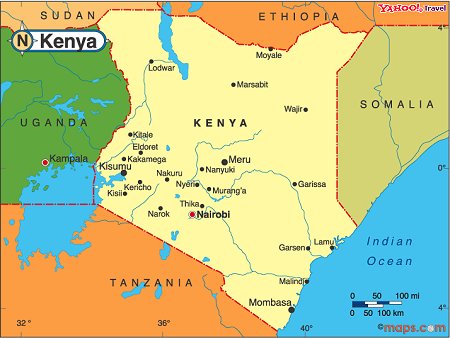 Map of kenya
Map of kenyaThe Gikuyu are the largest ethnic group in Kenya. They number about 5 million among Kenya's total population of about 28 million.
The Gikuyu live throughout Kenya but primarily reside in Nairobi Province and Central Province, located in the central region of the country. As Kenya's largest group, the Gikuyu occupy a central position in Kenyan social life.
The capital city of Nairobi lies just at the southern boundary of the area traditionally occupied by the Gikuyu people. Thus, many Gikuyu now are counted among the city's inhabitants of about 1.5 million people.
Gikuyuland is a plateau of about 100 miles (160 kilometers) from north to south and 30 miles (48 kilometers) from east to west.
Its elevation ranges from about 3,000 feet (900 meters) to over 7,500 feet (2,300 meters) above sea level. The plateau features deep gorges and parallel ridges. Rainfall is plentiful. However, on the eastern side of the plateau, the terrain is comparatively dry and is dominated by a grassland zone.
The elevation increases to the west, giving rise to more rainfall and woodlands with good potential for agriculture. The largest ecological area is characterized by high altitude and rainfall where plant life is abundant and most of the population is concentrated.
This is the area where significant cash crops are grown, including pyrethrum (a flower that produces a natural insecticide), coffee and tea. Rich soils aid the growth of traditional crops such as sweet potatoes, bananas, millet, sorghum, cow-peas, and maize (corn), which is the staple throughout Gikuyuland.
LANGUAGE OF THE KIKUYU PEOPLE IN KENYA
The Gikuyu are generally fluent in three languages. The primary national language in Kenya is English. All children receive instruction in English beginning in primary school and continuing through university.
KiSwahili is a second national language, although it is not the language of government, it is widely used as a language of trade and commerce, especially by those without formal education.
KiSwahili is also taught in the schools from primary through secondary school. The Gikuyu use either English or KiSwahili when traveling outside the central highlands. Radio, television, and mass media publications are available in both languages throughout Kenya.
The Gikuyu language is the preferred language at home and in the community. Gikuyu is taught in primary schools throughout Gikuyuland.
FOLKLORE OF THE KIKUYU PEOPLE IN KENYA
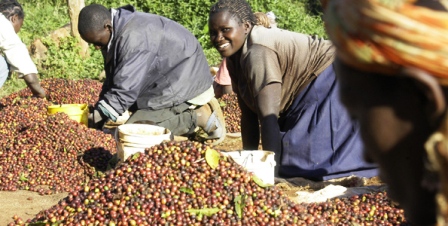 FOLKLORE OF THE KIKUYU PEOPLE IN KENYA
FOLKLORE OF THE KIKUYU PEOPLE IN KENYAThe Gikuyu people explain their origins as farmers and herders in the following way. The first tribal parents, Gikuyu and Mumbi, had their own children, who then had children who dispersed around Mount Kenya.
One day a grandchild's knee started swelling. When he opened his knee, three little boys emerged, who became his sons. In time, one of them became a hunter; one enjoyed collecting fruits and plants; and the third made fire for cooking.
The hunter domesticated some animals, and the collector grew crops such as bananas, cassava, and sweet potatoes. The third son applied fire to stones and metals and became a blacksmith. In this way, the Gikuyu culture originated.
The Gikuyu attribute their ultimate origins to sacred intervention by their god Ngai who sometimes resides on Mount Kenya which, for the Gikuyu, is a sacred place. According to legend, Ngai carried the first man, Gikuyu, to the top of Mount Kenya. Ngai showed him the rich land spread out below the mountain.
Gikuyu was told that his sons and daughters would inherit the land and multiply. Gikuyu was given a wife named Mumbi, meaning "Creator" or "Molder," and together they had nine daughters.
Ngai said that whenever problems arose, the people should make a sacrifice and gaze at Mount Kenya in order to be assisted. One day, Gikuyu was unhappy at not having a male heir. He pleaded with Ngai to provide a son for him.
After appropriate rituals, Gikuyu went to a sacred tree where he found nine men waiting to greet him. He arranged for these men to marry his daughters provided they agreed to live under his roof and abide by a matrilineal system of inheritance (tracing descent through the female line).
In time, many grandchildren and great-grandchildren were born. Still later, each daughter came to head her own clan, thus giving rise to the clans of the Gikuyu people.
The legend continues that in time the kinship system changed from a matrilineal to a patrilineal one (tracing descent through the male line). It is believed this happened because the women became excessive in their domination over men.
The men ganged up on the women when they were all pregnant at the same time. They overthrew female rule and became heads of their families. From then on, polygyny (one man with several wives) replaced polyandry (one woman with several husbands) as a marital practice. Nevertheless, the women were able to maintain their names for the main clans.
To this day, most women carry one of these names. The names are Wanjiru, Wambui, Wanjiku, Wangari, Waceera, Wairimu, Wangui, Wangechi, Wambura and Wamuyu.
A number of other important legends provide cultural heroes. Among these are Karuri, who was a past ruler of legendary proportion. Another is Wamugumo, a noted giant believed to have been able to eat an entire goat by himself.
He could clear land that took many men a long time to clear, and he was able to kill lions, buffalo, and leopards with ease. A famous woman called Wangu wa Makeri ruled during the period of the matriarchy (when women held the majority of power). At that time, women were allowed to have many husbands, especially young men, and the old men did all of the work.
Traditionally, folktales and riddles combined with myths to provide young people with a strong sense of Gikuyu values. Grandmothers were excellent story tellers. Some common riddles are: A man who never sleeps hungry?
Fire (since it is fed throughout the night); My son lives between spears? The tongue; My child travels without rest? The river (always flowing). Proverbs are numerous in modern-day culture and change constantly to reflect the times. For example, one proverb teaches that "A good mortar does not correspond to a good pestle," to explain that successfully matching a husband and a wife may be difficult.
Another proverb widely heard is "When the hyenas come, nobody will give shelter," which means that in times of panic, it is every man for himself. Many proverbs teach common sense, such as "When one goes on a journey, he does not leave his bananas cooking in the fire."
One tongue twister refers to a child who saw a tadpole and ran away; when the tad-pole saw the child, it also ran away. In Gikuyu, one says Kaanaka Nikora kona kora kora, nako kora kona kaanaka Nikora kora.
RELIGION OF THE KIKUYU PEOPLE IN KENYA
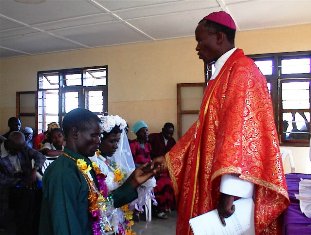 RELIGION OF THE KIKUYU PEOPLE IN KENYA
RELIGION OF THE KIKUYU PEOPLE IN KENYAThe Gikuyu today are prominently represented in a variety of Christian churches. These include the Roman Catholic, the Anglican, fundamentalist, and African Separatist churches. The significance of belief in a high god, Ngai, is maintained or was transferred to the Christian-centered belief in monotheism (the belief in one god). Ngai created everything. He lives in the sky and is invisible. Sometimes he lives on Mount Kenya.
He should only be approached for serious problems such as those involving life-and-death questions. During periods of famine or epidemic diseases, Ngai is approached by the elders on behalf of the entire community.
Other traditional beliefs have also persisted into contemporary life. Important among these is the belief in ancestral spirits.
These departed relatives are involved in all matters, especially those not considered important enough to seek Ngai's attention. Matters of everyday health, for example, involve the ancestor spirits, who cause sickness when their interests are not taken into consideration.
"Traditional doctors" were popular resources for determining which ancestor was responsible for a particular disease and for advice on how to please the ancestor.
In the past, religious values emphasized community solidarity and discouraged individualism. Authority was vested in elders and prophets, who were believed to know what was best for all people.
Expressions of individuality and solitary life were not encouraged. Someone perceived to be outside the group might be accused of being a witch and could be killed by the elders. At the same time, considerable security was provided by the emphasis on the group.
MAJOR HOLIDAYS OF THE KIKUYU PEOPLE IN KENYA
The Gikuyu typically celebrate the same holidays as other Kenyans ( see Kenyans).
RITES OF PASSAGE AMONG THE KIKUYU PEOPLE IN KENYA
The Gikuyu are well known for their traditional rituals of adolescence. Prior to the arrival of Europeans, there was a custom known as Ngweko.
Periodically, elders supervised gatherings of young people who would spend private time with each other for the purpose of getting to know members of the opposite sex. Young people paired off according to mutual attraction.
Should a young girl become pregnant, the boy responsible was held accountable and was expected to marry the girl he had impregnated. The Gikuyu considered Ngweko to be a form of sex education.
And since Ngweko was associated with reproduction, the Gikuyu considered it a sacred act of carrying out the orders of their high god Ngai to reproduce. Many elder Gikuyu believe that the missionaries made a mistake when they labeled Ngweko as sinful.
The schools that were established after the arrival of the Europeans did not include sex education. Since the beginning of co-educational boarding schools, teenage pregnancies have become a major social problem in Kenya, including among the Gikuyu.
Prior to participating in Ngweko, both boys and girls undergo numerous rituals, including surgery on their genital organs.
The purpose of these rituals is to enable young people to bond with others with whom they have undergone painful experiences. Clitoridectomy (female circumcision) was, and to some extent still is, practiced by the Gikuyu.
It is the topic of much debate by Africans and others, and is often referred to by outsiders as female genital mutilation.
A middle-ground position appears to be emerging that grants the social significance of adolescent ritual while working to eliminate clitoridectomy, even under hospital conditions where it now occurs. (The procedure was formerly done in unsterile conditions with crude instruments. Many life-threatening injuries and deaths resulted.) Gikuyu boys continue to be circumcised, a practice widespread in Africa and many other parts of the world as well.
Many dances and songs, called mambura (rituals or divine services), take place during initiation ceremonies. Gikuyu history is publicly enacted so as to provide a sense of community solidarity. Each irua group is given its own special name.
Initiation ceremonies involve special foods and the selection of a sponsor to impart knowledge and to supervise the young person. After several days of instruction, boys and girls are taken together to a compound for their circumcision.
Numerous friends and relatives gather for singing and dancing throughout the night. A special feast is made for the parents of the children. The day before the operation, there is a ceremonial dance known as matuuro .
The next day the physical operations occur. Both boys and girls are expected to endure circumcision without crying or showing signs of weakness.
Many elder Gikuyu people still maintain strong relationships with others with whom they were initiated.
While mandatory painful initiation ceremonies are increasingly becoming a thing of the past, many Kenyans are troubled by what they perceive to be a rising tide of individualism and lack of peer group solidarity among the young.
Young people today in Kenya must work out for themselves how to combine old customs with modern ones. This issue is a prominent theme and is the subject of stories, plays, and other programs on Kenya radio and television.
RELATIONSHIPS AMONGTHE KIKUYU PEOPLE IN KENYA
The local community, school, and church are central to Gikuyu social relations. Dating, courtship, friendship, and family life are significant concerns around which people construct their social lives. In the past, social life was dominated by rules about age hierarchies and gender distinction.
There is evidence that Gikuyus have more individual choice in these matters today. However, some Gikuyu have lost their sense of community responsibility so cherished in the past.
In the past, boys were organized into groups of local boys who had been initiated at the same time. These were grouped into larger groupings, called regiments. Boys in a common group or regiment proceeded through life together and exercised authority over groups and regiments coming after them.
Detailed rules governed the roles of various age or generational groupings in the realms of dating and procreation, defense, and social structure.
LIVING CONDITIONS OF THE KIKUYU PEOPLE IN KENYA
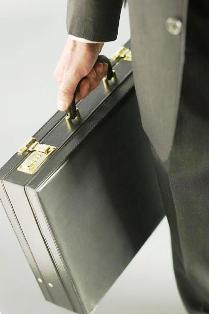 LIVING CONDITIONS OF THE KIKUYU PEOPLE IN KENYA
LIVING CONDITIONS OF THE KIKUYU PEOPLE IN KENYAThe Gikuyu enjoy the abundant natural resources provided by the central highlands of Kenya. Due to the altitude, much of the region is free of malarial mosquitoes and the tsetse and other flies that spread human and animal diseases. The Gikuyu have had success in commercial farming and in many other businesses.
Some Gikuyu now own large estates and live an affluent lifestyle. However, many other Gikuyu live in slums, which have grown rapidly in urban areas, especially Nairobi. Thousands of homeless street children have come to Nairobi from Gikuyu towns where they suffered from family dislocation and poverty.
In the past, traditional Gikuyu houses were round with wooden walls and grass thatched roofs. Neighbors generally helped in the construction of a home in exchange for beer and meat. Building supplies were collected from local materials.
A husband and wife typically lived in separate houses. The woman's house had space for her children and her sheep and goats. Well-built homes sometimes lasted for ten years or more, although rethatching the roof was an annual event.
FAMILY LIFE OF THE KIKUYU PEOPLE IN KENYA
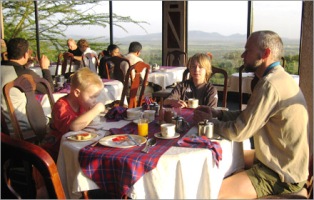
Traditionally, the Gikuyu preferred large families living in big compounds. It was considered a religious obligation to have children. Four children—two boys and two girls—was the ideal. Boys were desirable because they carried on the family name, which was passed on through the male line.
Girls were desired so the family could collect bride wealth (gifts to her family from her husband-to-be's family), which could in turn be used to obtain wives for their brothers. A married woman became more powerful as she bore more children.
Her children stayed with her in her home, separate from their father. Polygyny (one man having multiple wives) was valued as a means to provide large families.
Women, too, often preferred polygyny to monogamy (one man and one woman); they often helped their husbands find younger wives. Elder wives had clear authority over younger wives and supervised them in affairs of the compound.
Events leading to marriage began with an initial meeting of the aspiring son-in-law with his perspective parents-in-law. The young woman's agreement was required at this meeting before events could proceed.
Later stages included parental visits, exchanges of goods as bride wealth, and finally the young woman moving into the home of her husband. The marriage itself was finalized when, prior to moving in with her husband's family, the young man and his relatives visited the young woman's house bearing special gifts.
Today, marriage no longer involves these traditional rituals and exchanges. Nevertheless, there is still bride wealth, significant involvement of parents in the choice of their children's spouses, and the high value placed on having children. Marriage ceremonies no longer involve Gikuyu religious rituals, which have given way to Christian and Islamic marriage practices.
CLOTHING OF THE KIKUYU PEOPLE IN KENYA
In the past, Gikuyu adults dressed in animal skins, especially sheep and goat skins. Skin tanning was a vital industry for which many men were renowned as specialists. Women's clothing includes three pieces—an upper garment, a skirt, and an apron. Men wore a single garment covering the entire body.
Young men preferred bare legs made possible by wearing short skirts, especially those made from kidskin (lambskin or goatskin) because of its smooth hairs. Elders wore more elaborate costumes—often made of fur.
European clothing is now commonplace throughout Gikuyuland. In rural areas, women wear multicolored cotton dresses or skirts and blouses.
Men generally wear Western-style trousers and shirts with jackets and ties for formal occasions. Women who prefer to dress in African fashion wear long pieces of colorful cloth as skirts and wrapped around a dress.
FOOD OF THE KIKUYU PEOPLE IN KENYA
Farm produce and meat are abundant and provide excellent nutrition. Maize (corn) made into a thick porridge, called ugali , is the national dish of Kenya.
Ugali is eaten with meat, stews, or traditional greens known as sukuma wiki. Irio, a Gikuyu dish, is a mixture of the kernels from cooked green corn boiled with beans, potatoes, and chopped greens.
In the past, beer brewing was a cooperative activity between men and women. Beer was made from sugarcane, maize, and millet. Gourds were used to contain the strained juices for fermenting. Today, bottled beverages generally have replaced traditional beer for daily and social consumption. Distilleries in Kenya provide an assortment of beer and soft drinks.
Eating meat is standard for all ceremonial occasions. A popular meal, especially on Sundays, is nyama choma (roasted meat).
Goat meat is the most popular choice, although it is more expensive than beef. Chicken is also a regular treat. In the past, the Gikuyu had a ceremonial calendar that involved feasting. Boiled and roasted meat was eaten on these occasions, and beer was the beverage of choice.
Although the traditional ceremonial calendar is largely a thing of the past, Gikuyu maintain an intensely social existence involving regular attendance at funerals and weddings. These events are always accompanied by an abundant supply of meat and bottled beverages.
EDUCATION OF THE KIKUYU PEOPLE IN KENYA
edTraditionally, children were taught through an educational process that began very early in the life cycle. Infants were sung lullabies emphasizing tribal values. As a child grew, he or she listened intently to tales, riddles, and proverbs having moral messages.
Even after the advent of formal schools during the colonial era, a special time was set aside for the telling of folktales. In the past, boys played games emphasizing leadership roles that involved bows and arrows, spears, and slings to teach marksmanship skills.
Girls cooked imaginary dishes and played at making pots and grinding grains. Dolls, made with local clay and grass, were also standard play items for girls. As children matured, boys were trained by their adult male relatives, and girls by their mothers, grandmothers, and older sisters.
For example, boys were taught to differentiate large herds of cattle or goats by their color, size, and horn texture. Fathers and grandfathers also taught youngsters the boundaries of their land, techniques for preparing land for farming, and family genealogy.
Mothers taught girls about crops, soils, weather and other significant details of food production.
Today, the traditional informal educational system has been mostly replaced by formal education.
In Kenya, including Gikuyuland, there has been an attempt in recent years to make formal education more sensitive to traditional values and knowledge.
A hazard of teaching only modern subject matter is that traditional wisdom—such as, for example, knowledge about wild plants potentially edible during famine—becomes lost to future generations.
Reaching a reasonable balance between the old and the new in the school curriculum is a constant challenge faced by Gikuyu educators.
Harambee (which means "let's pull together") primary and secondary schools are being built throughout Gikuyuland and elsewhere in Kenya. The literacy rate (percentage of people able to read or write) in Kenya is about 50 percent, but it is lower in Gikuyuland.
CULTURAL HERITAGE OF THE KIKUYU PEOPLE IN KENYA
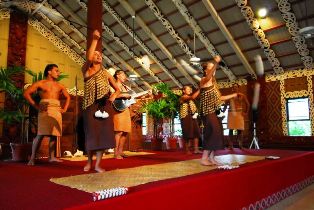
Music and dance, along with storytelling, were all emphasized in the past. Dancing by men and women was mandatory at initiation ceremonies, weddings, and other public events. People of all ages enjoyed dancing.
There were three kinds of musical instruments in the past: drums, flutes, and rattles. The last were used for private pleasure, while drums and flutes were played publicly at dances. Song was woven into the fabric of everyday life.
There were songs for babies; songs sung by girls while threshing millet; songs sung by boys while practicing archery; songs sung by families and community members during weddings and funerals; songs sung by community members and initiates during ceremonies; songs about everyday problems of life and love that were sung around the campfire; songs for drinking; songs about cultural heroes both past and present; and songs sung in praise of ancestors and the High God, Ngai.
Written literature includes children's literature, which recount tribal stories and tales.
One such book, titled Nyumba ya Mumbi, graphically illustrates the Gikuyu creation myth. Perhaps the most famous twentieth-century writer is Ngugi wa Thiong'o, whose many stories, plays, and novels have chronicled the Gikuyu struggle for national identity.
EMPLOYMENT OF THE KIKUYU PEOPLE IN KENYA
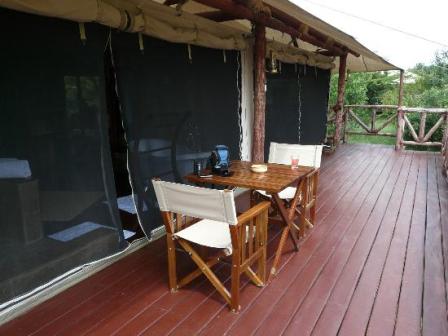 EMPLOYMENT OF THE KIKUYU PEOPLE IN KENYA
EMPLOYMENT OF THE KIKUYU PEOPLE IN KENYAIn the past, there was a very strong division of labor by gender. Nevertheless, men and women worked together as well as separately in tasks that complemented each other.
Each woman had her own plots of land where she cultivated crops such as sweet potatoes, millet, maize (corn), and beans. Men were responsible for heavy labor, such as clearing the land and cutting down trees.
Household tasks for women involved maintaining granaries and supervising the feeding of sheep, goats, and cows. A polygynous husband (one with multiple wives) had his own hut apart from his wives where he ate with friends or his children and was served food by his wives.
On a daily basis, women, together with their children, collected firewood, water, and produce from the garden.
There was also a division of labor by gender concerning industries. Some men were ironsmiths, manufacturing knives, arrowheads, bracelets, axes, hammers, spears, and other utilitarian tools. Only women were potters. Pottery provided for household needs. Women also excelled in making baskets. Men tended to specialize in skin tanning.
The informal educational system of the Gikuyu involved children and young people learning economic tasks from adults and specialists through direct observation and often apprenticeship.
Today, the Gikuyu remain intensely agricultural and devoted to their land. Cash crops are now significant, but the traditional division of agricultural labor is still very much in place.
Through formal education and accumulation of private assets, many Gikuyu are now wealthy and enjoy affluent lifestyles. Professional occupations, as well as employment in factories and other working-class jobs, now differentiate the Gikuyu into social categories based on income.
Nevertheless, among most Gikuyu, there is still a strong sense of ethnic solidarity and shared cultural heritage.
SPORTS AMONG THE KIKUYU PEOPLE IN KENYA
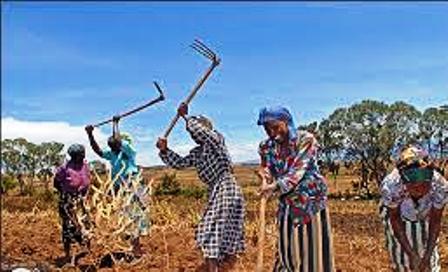
Throughout Gikuyuland, schools sponsor competitive sports for boys and girls. Spectators enjoy soccer (football) and track and field.
In the past, Gikuyu boys enjoyed games such as wrestling, weightlifting, and club throwing. There were district mock fights pitting young boys from each area against their counterparts from elsewhere. Wrestling produced stars who were widely praised throughout the country.
Girls played hide-and-seek and jumping games while still young, but became increasingly more involved with household responsibilities and marriage as they approached their midteen years.
RECREATION AMONG THE KIKUYU PEOPLE IN KENYA
Like other Kenyans, the Gikuyu enjoy watching television, listening to the radio, and going to movie theaters. Radio and television regularly feature tradtional Gikuyu material.
People of all ages play a board game known as bao in which players attempt to capture the seeds of their opponents.
The game involves a wooden board containing holes in which seeds are placed. A player seeks to capture his opponent's seeds using a complex strategy whereby his opponent's seeds end up on his side of the board.
This indigenous (native) African game of strategy is widespread in Africa and is now played elsewhere in the world.
CRAFTS AND HOBBIES OF THE KIKUYU PEOPLE OF KENYA
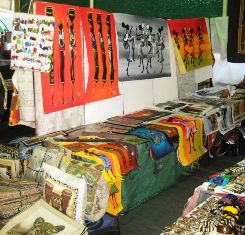
Traditional industries and crafts have been largely replaced by tourist and commercial markets. The most notable traditional activity still in existence is basket making, which is done by women. The Gikuyu kiondo (basket) is now popular in Europe and America, where it is widely used by students as a handbag or bookbag.
The kiondo is a knitted basket made in various shapes, colors, and sizes. These baskets are knitted from strings gathered from shrubs.
They are sometimes decorated with Gikuyu geometric designs. Another traditional folk art is the manufacture of figurines made from local materials such as clay, discarded wire, and grass.
They depict scenes from solitary or communal daily life such as children playing, elders in various kinds of clothing, people dancing, bicycling, and singing.
SOCIAL PROBLEMS OF THE KIKUYU PEOPLE OF KENYA
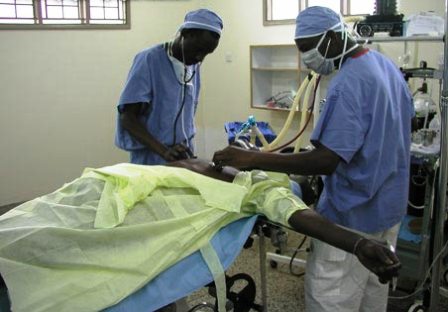
Perhaps the primary social problem of the Gikuyu is how best to manage their comparative success in Kenyan commerce and politics. The Gikuyu are often opposed by groups trying to lessen the political power they hold by virtue of their large population and their relative wealth among Kenya's ethnic groups.
The Gikuyu have expanded into regions outside of their central highlands homeland. Many Gikuyu, therefore, are now wealthy "immigrants," seen by groups elsewhere in Kenya as intruders and landgrabbers.
Problems in Kenya as a whole include alcoholism and the spread of human immunodeficiency virus (HIV). Consumption of alcoholic beverages is common. This combines with poorly maintained roads to produce one of the highest rates of accidental death due to driving anywhere in the wor
Other Pages of Interest
Kenya Art | Kenya Festivals | Kenya Gender Issues | Kenya Gestures | Kenya Greetings | Kenya History | Kenya Language | Kenya Literature | Kenya Modern Culture | Kenya Music | Kenya National Anthem | National Dress Cord of Kenya | Kenya People | Kenya Respect | Kenya Taboos | Kenya Television and Culture |Recent Articles
-
Garam Masala Appetizers ,How to Make Garam Masala,Kenya Cuisines
Sep 21, 14 03:38 PM
Garam Masala Appetizers are originally Indian food but of recent, many Kenyans use it. Therefore, on this site, we will guide you on how to make it easily. -
The Details of the Baruuli-Banyara People and their Culture in Uganda
Sep 03, 14 12:32 AM
The Baruuli-Banyala are a people of Central Uganda who generally live near the Nile River-Lake Kyoga basin. -
Guide to Nubi People and their Culture in Kenya and Uganda
Sep 03, 14 12:24 AM
The Nubians consist of seven non-Arab Muslim tribes which originated in the Nubia region, an area between Aswan in southern
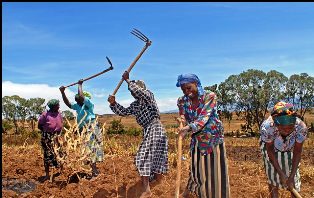
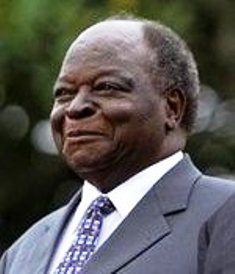
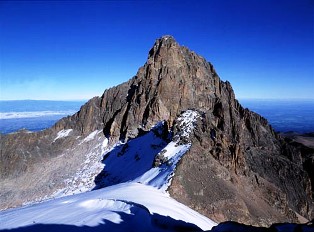
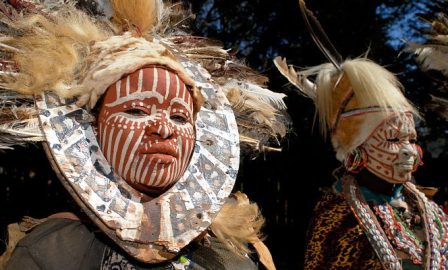
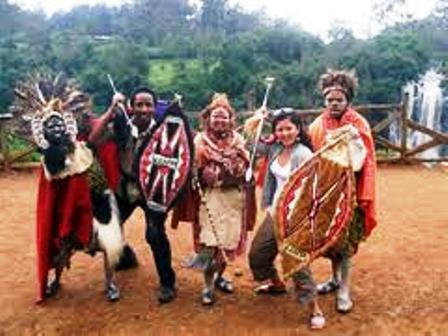
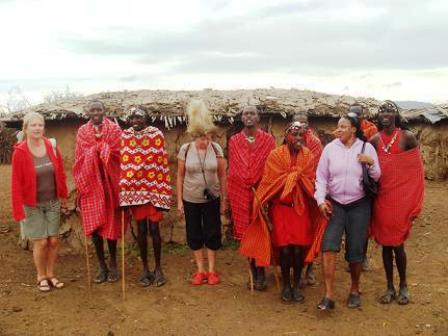
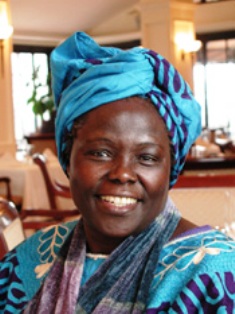
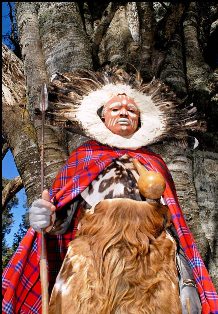
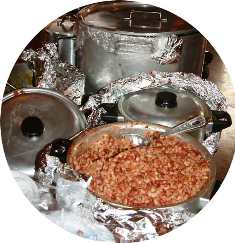
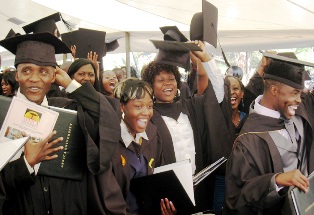







New! Comments
Have your say about what you just read! Leave me a comment in the box below.